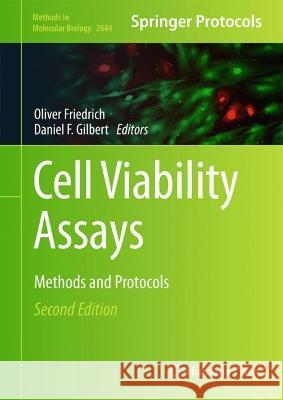Cell Viability Assays: Methods and Protocols » książka
Cell Viability Assays: Methods and Protocols
ISBN-13: 9781071630518 / Angielski / Twarda / 2023 / 618 str.
Cell Viability Assays: Methods and Protocols
ISBN-13: 9781071630518 / Angielski / Twarda / 2023 / 618 str.
(netto: 845,42 VAT: 5%)
Najniższa cena z 30 dni: 848,19
ok. 22 dni roboczych
Bez gwarancji dostawy przed świętami
Darmowa dostawa!
This updated edition explores assessing cell viability as a measure for cell fitness under conditions of physiological and patho-physiological stress as well as challenging conditions to cellular and tissue homeostasis, and accounts for the ongoing 2D-to-3D development with topics and assays that target cell viability, mobility, and functionality of tissues and organs, natural or bioartificial, in 3D. The book’s contents span a wide range of viability and functionality assays, from impedance spectroscopy to chemiluminescence, fluorescence and label-free optical detection methodologies. Written for the highly successfulMethods in Molecular Biologyseries, chapters include introductions to their respective topics, lists of the necessary materials and reagents, step-by-step, readily reproducible laboratory protocols, and tips on troubleshooting and avoiding known pitfalls.Authoritative and up-to-date,Cell Viability Assays: Methods and Protocols, Second Editionserves as a valuable resource to the growing community in bioinspired life sciences, biomedical sciences, and biotechnology by providing more standardized protocols to probe the “wellbeing” of cells in various environments.
This updated edition explores assessing cell viability as a measure for cell fitness under conditions of physiological and patho-physiological stress as well as challenging conditions to cellular and tissue homeostasis, and accounts for the ongoing 2D-to-3D development with topics and assays that target cell viability, mobility, and functionality of tissues and organs, natural or bioartificial, in 3D. The book’s contents span a wide range of viability and functionality assays, from impedance spectroscopy to chemiluminescence, fluorescence and label-free optical detection methodologies. Written for the highly successful Methods in Molecular Biology series, chapters include introductions to their respective topics, lists of the necessary materials and reagents, step-by-step, readily reproducible laboratory protocols, and tips on troubleshooting and avoiding known pitfalls.











